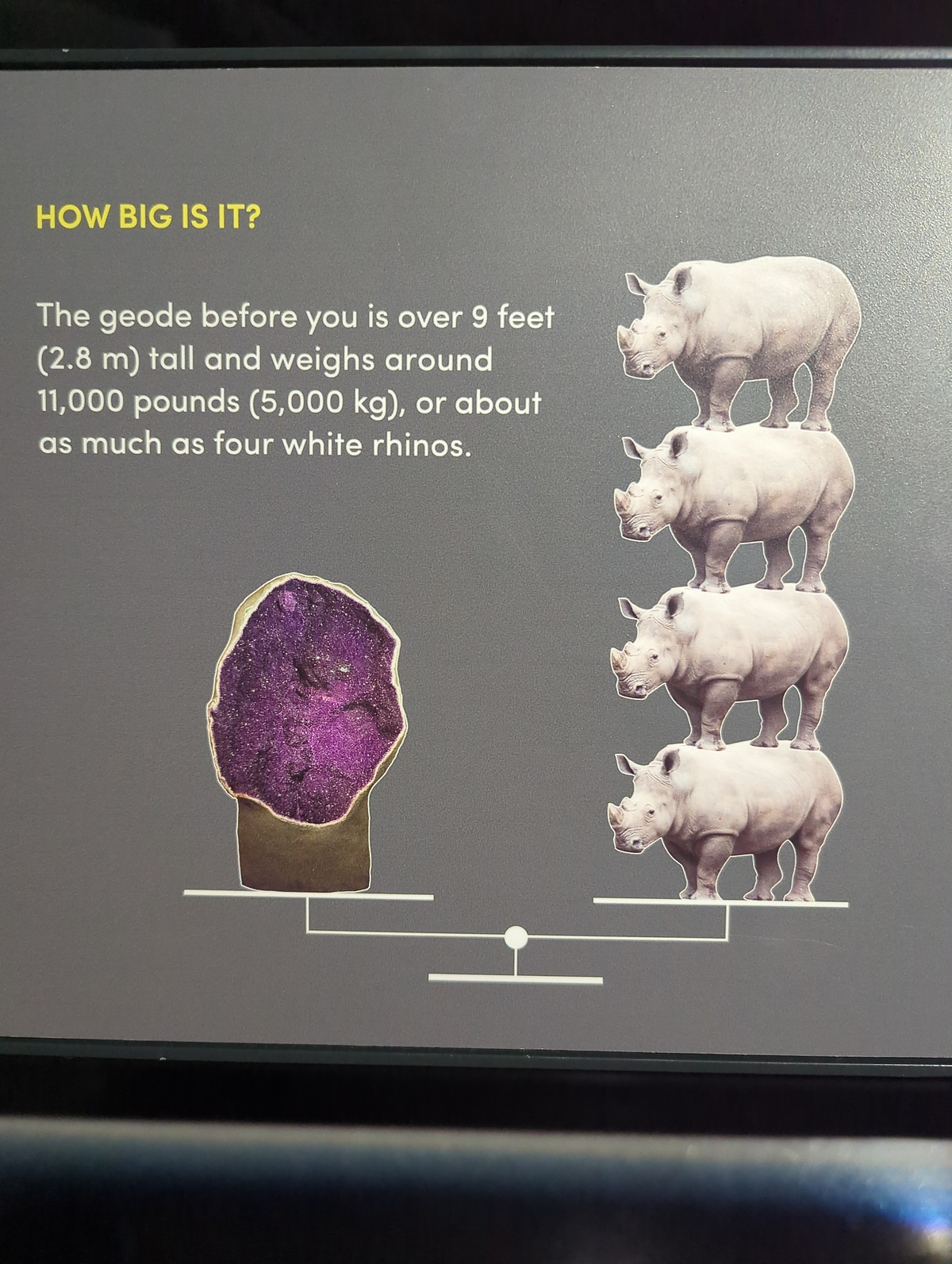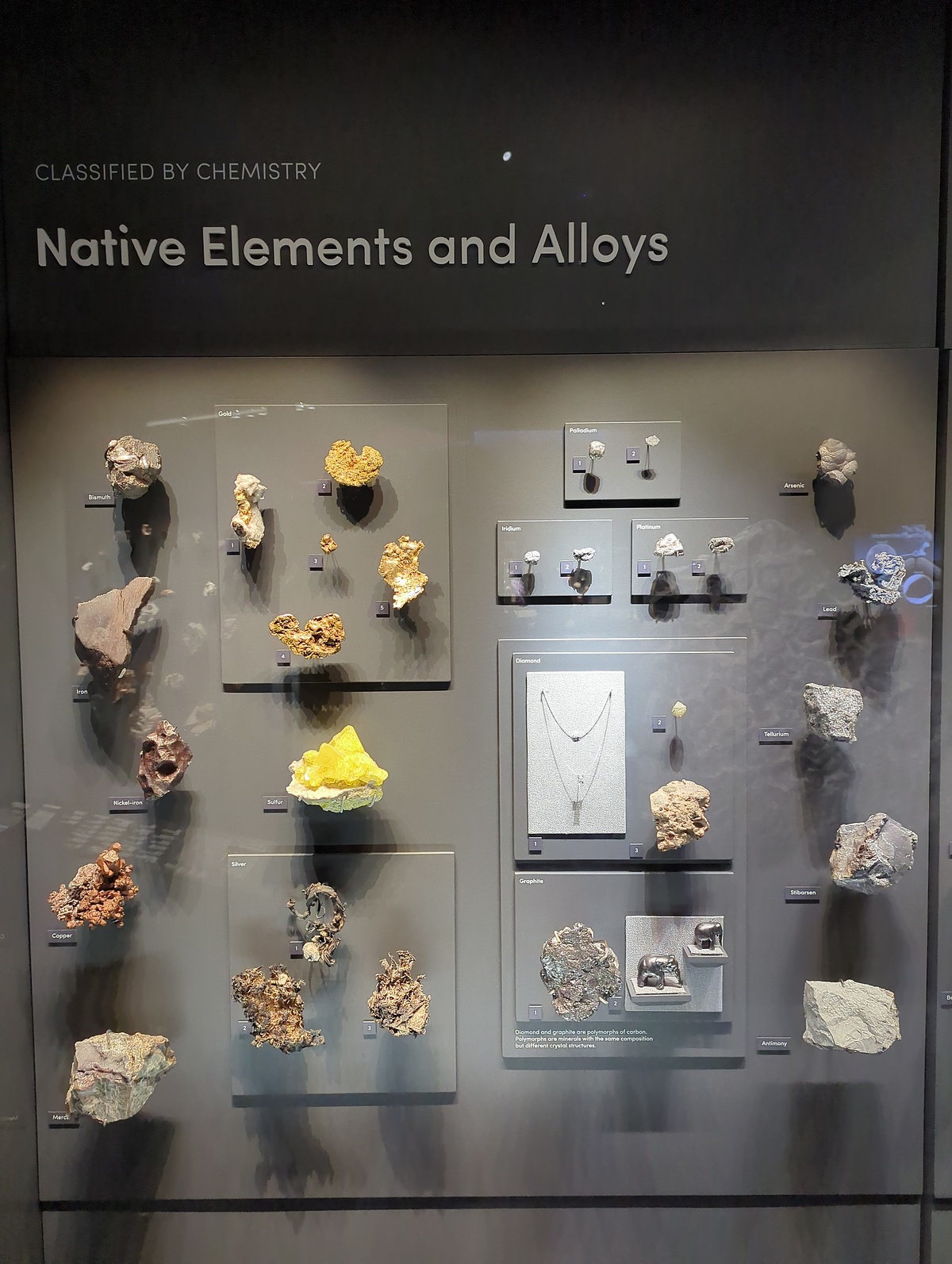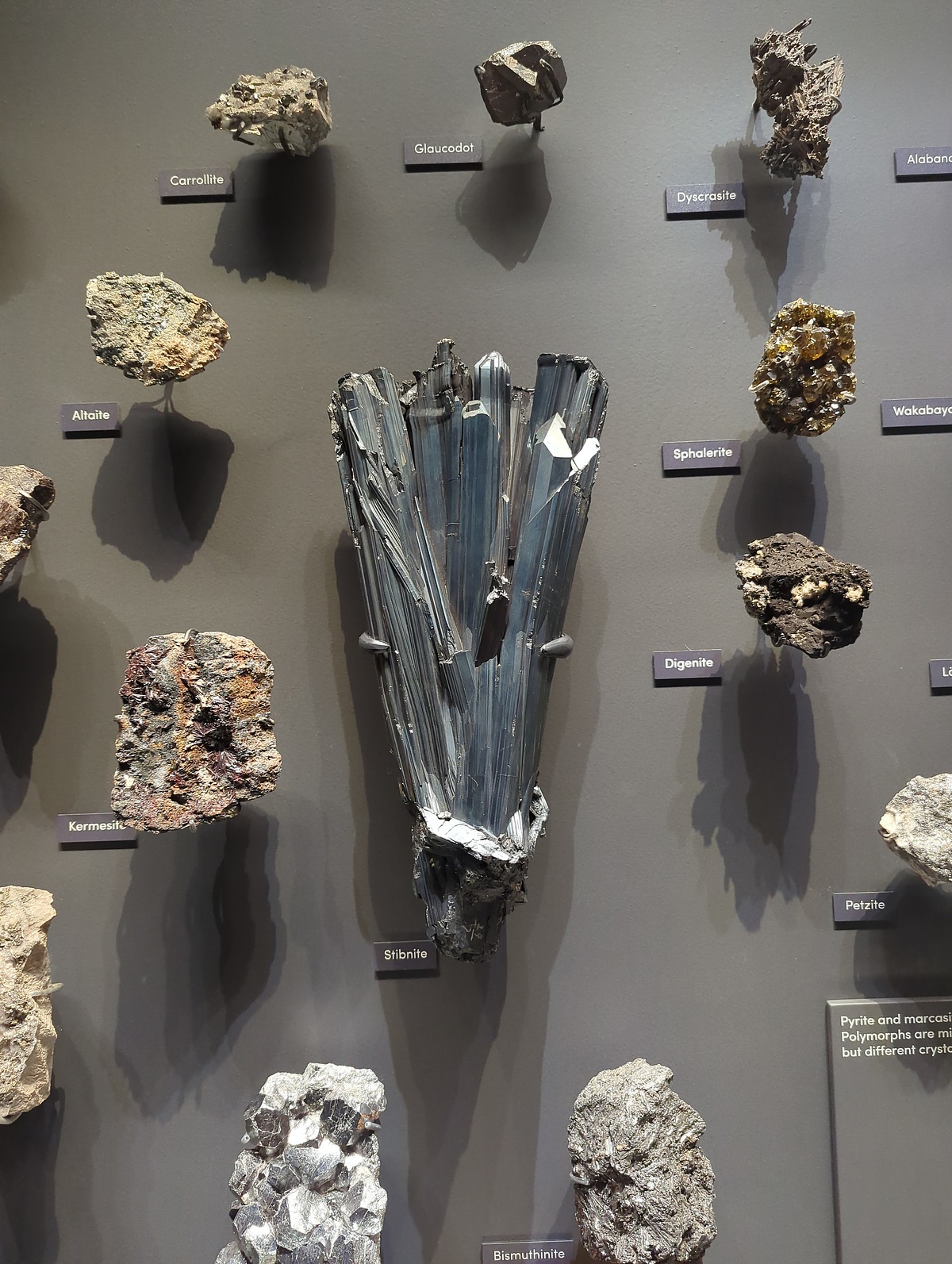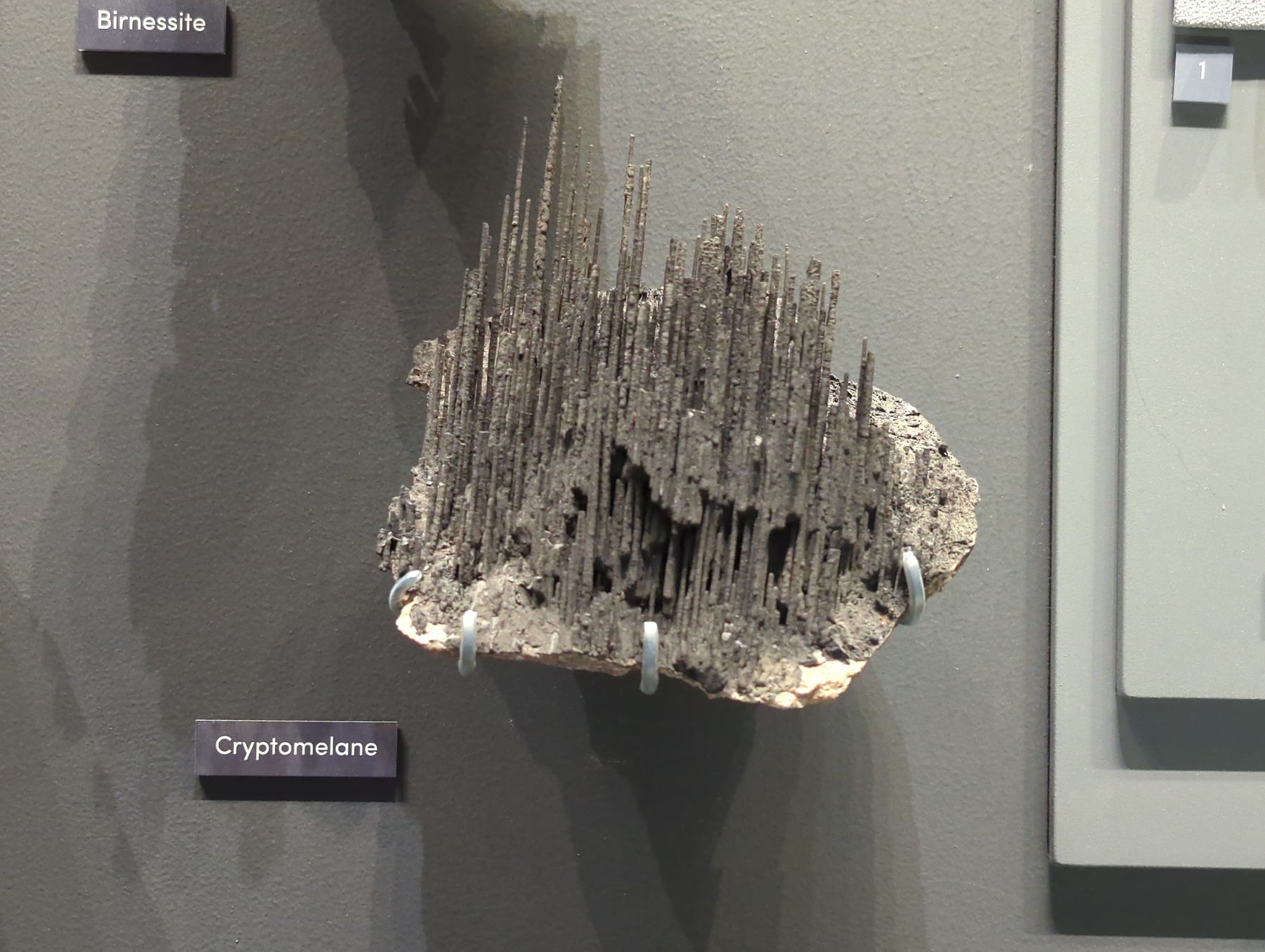The American Museum of Natural History
Last Updated: 24th Dec 2022By Jolyon Ralph
This is a LIVE report, keep this page loaded for live updates - new images will appear as they are added.
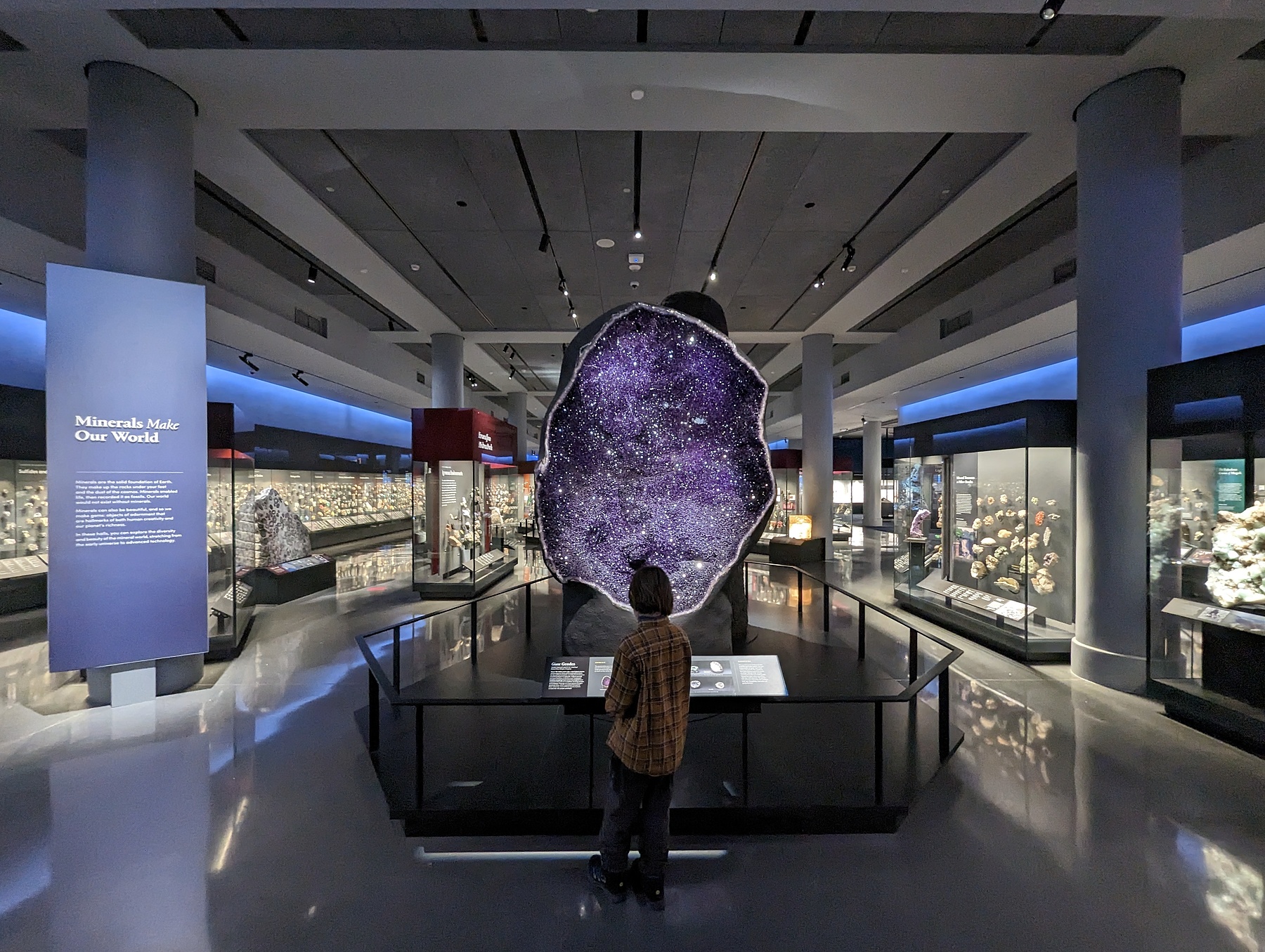
We are back in New York for a quick visit, and finally have the chance to see the new mineral galleries at the AMNH, thanks to our host Jamie Newman.

A new display on the timeline of mineral evolution helps explain Earth's mineral diversity in the context of Earth's geological and biological changes over time.

The massive Ahnighito meteorite is 34 tons of iron that fell in Greenland. Unfortunately they do not give this weight in rhino units. The supports it stand on extend through the basement into the bedrock under the museum.

Roman here:
Farmers found a pieces of a meteorite in Kansas and called it the Brenham meteorite.
Cool!
Farmers found a pieces of a meteorite in Kansas and called it the Brenham meteorite.
Cool!

This massive block of gossan full of malachite and azurite from the Czar Mine, Bisbee, Arizona is called the singing stone because it made a high-pitched sound as the humidity changed. Now the environment in the museum is regulated it is silent. It weighs the same as three large cows but this isn't converted into metric rhinos unfortunately
Article has been viewed at least 4494 times.


